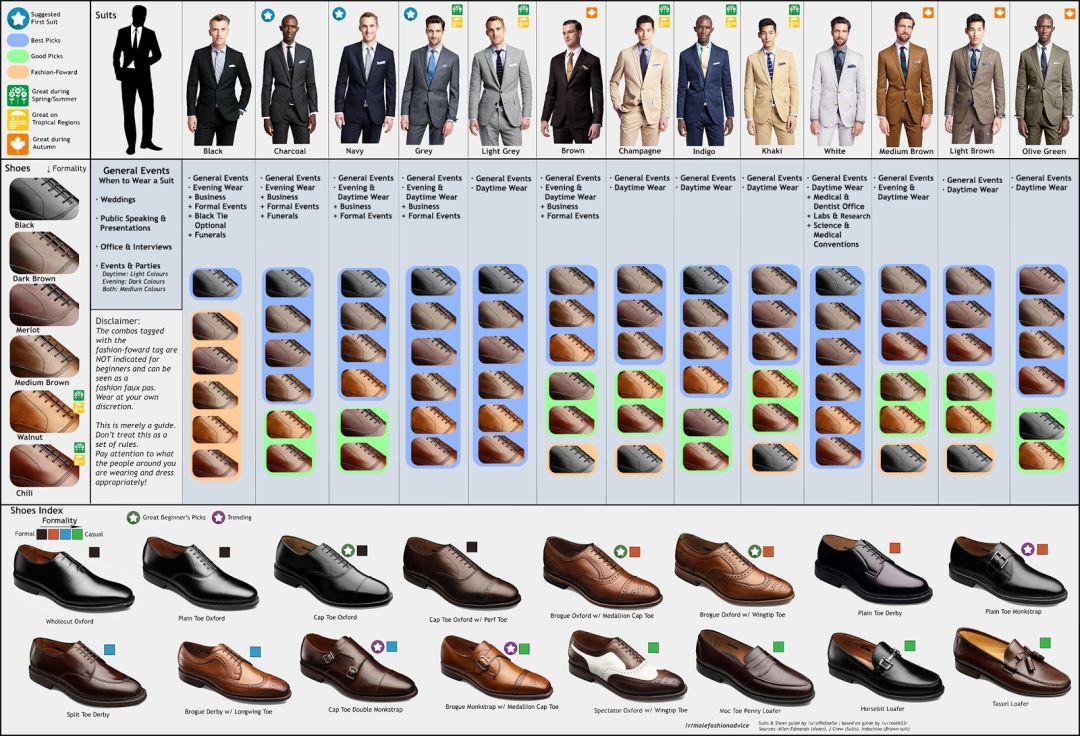Title: Mastering the Art of Wearing a Suit: A Comprehensive Guide to Dressing Sharp for Any Occasion
"Mastering the Art of Wearing a Suit: A Comprehensive Guide to Dressing Sharp for Any Occasion" is a comprehensive guide designed for those looking to enhance their professional image. The guide covers various aspects of suit dressing, including fit, style, and accessories. It emphasizes the importance of choosing the right fit and offers tailored advice on how to achieve it. Additionally, it provides tips on selecting the appropriate style for different occasions and how to layer pieces for maximum versatility. The guide also delves into the world of accessories, offering recommendations on how to accessorize with confidence. Overall, "Mastering the Art of Wearing a Suit" is a practical and comprehensive guide that will undoubtedly help readers elevate their fashion game and make a lasting impression in any situation.
In today's professional world, dressing sharp and putting your best foot forward is essential. One of the most versatile and timeless pieces of clothing that can help you achieve this is a suit. However, donning a suit correctly can be a challenging task, especially if you're new to the world of formal attire. In this guide, we'll cover everything from how to choose the right suit to wearing it with confidence and flair. So, let's dive in!
1. How to Choose the Right Suit
Choosing the right suit is crucial to looking sharp and polished. Here are some tips to help you pick the perfect fit for your body type and occasion:
a) Body Type: Consider your body shape when selecting a suit. There are three basic body types: rectangular, inverted, and triangular. Rectangular bodies look best in straight-cut suits, while inverted bodies look better in fitted suits. Triangular bodies may need to consider tailoring their suits to create more balance.

b) Fit: When trying on suits, pay attention to the fit. The shoulders should have enough room to move comfortably, without feeling constricted. The waist should fit snugly but not be too tight. The pants should fit securely at the hip, with a slightly tapered leg from the knee to the hemline.
c) Material: Suits are typically made from wool or synthetic materials like polyester. Wool offers a classic and sophisticated look, while polyester is more durable and easier to care for. Consider your personal preferences and the occasion you'll be wearing the suit for when making your choice.
d) Color: The color of your suit is an important consideration, as it can greatly impact your overall look and feel. Darker shades like navy or black offer a sophisticated and formal appearance, while lighter colors like beige or light gray can create a more relaxed and casual vibe. Consider the event you'll be attending and the atmosphere when choosing your suit's color.
e) Details: Pay attention to the small details when selecting your suit, such as the lapels, pockets, and buttons. A well-tailored suit will have carefully crafted details that enhance its overall appearance.
2. How to Style Your Suit
Once you've found the perfect suit, it's time to learn how to style it in a way that showcases your personality while maintaining a sense of professionalism. Here are some tips to help you do just that:
a) Accessories: Add some personality to your suit with accessories like a tie, pocket square, or watch. Choose ties in complementary colors or patterns to your suit's neckline. Pocket squares can help break up the monotony of a solid-color suit, while watches can add a touch of sophistication and refinement.

b) Shoes: Your shoes are one of the most critical elements of your overall outfit. Choose dress shoes that are both comfortable and stylish, such as black patent leather oxfords or dark brown derbies. Avoid wearing sneakers or sandals with suits, as they will detract from your overall appearance and professionalism.
c) Jacket Layering: If you live in a warmer climate or tend to wear a light jacket underneath your suit during the summer months, consider layering for added warmth and style. A cardigan sweater or lightweight coat can provide both comfort and visual interest when worn over a suit jacket. Be sure to keep the colors coordinating to maintain a cohesive look.
d) Pants Length: The length of your pant legs plays an important role in determining the overall fit and style of your suit ensemble. Avoid baggy or too long pants, as they can make you appear sloppy or unprofessional. Stick to standard leg lengths or consider opting for cropped pants if you prefer a more modern take on a classic suit look.
e) Belt Choice: The belt is another essential component of your suit ensemble that can greatly impact the overall appearance and fit of your outfit. Select a belt in complementary colors or materials to your suit, such as a dark brown leather belt for a black or dark green suit. Avoid using belts with excessive buckles or intricate designs, as they can distract from the focus on your clothing.
In conclusion, dressing sharp in a suit requires careful consideration of both fit and style. By following these tips
Articles related to the knowledge points of this article:
Title: Top 10 Brands of Silk Scarves in the World
Title: Embroidering a Symphony of Beauty: The Art of Wrapping a Scarf in a Rose
Title: Creative Ways to Tie a Sun-Protection Scarf for Different Occasions
Title: Creative Ways to Tie a Scarf: Transform Your Style with a Big Scarf



